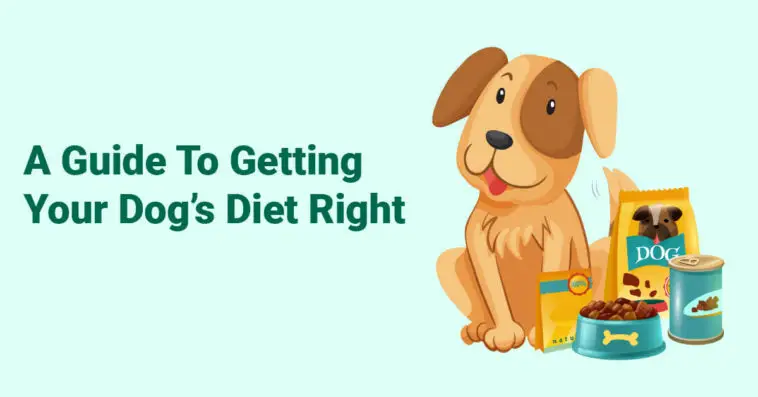Introduction
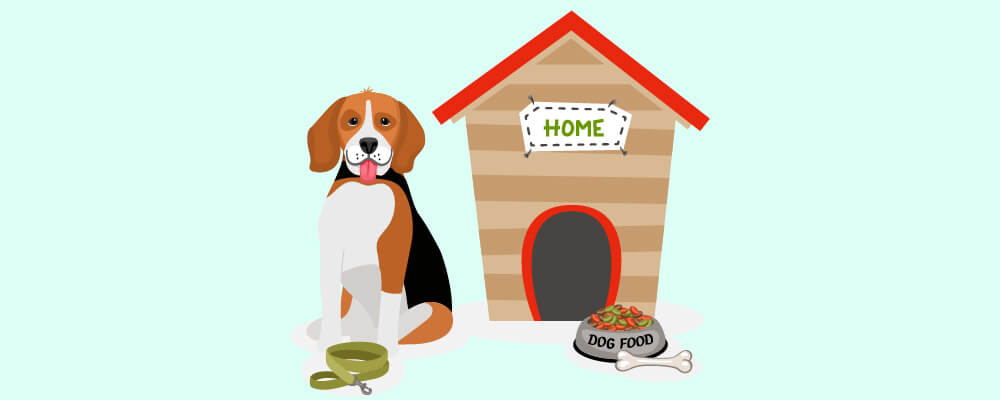
When you have a pet, you need to decide what you will feed them, and this is never something to be taken lightly. Diet is on par with mental health and exercise, and the right diet can be a defining factor of a healthy dog, as one of the largest factors toward wellbeing. Feeding a healthy dog healthy foods is super important.
Eating habits that we set up can be the difference between a long and healthy life ahead, or programming failure and hurt for those we love, no matter whether they’re human or canine.
If you are happy with what you feed your dog then good on you, however, we always suggest incorporating some of the things on our list to make it even better, and introduce healthy variety as well.
And remember that when it comes to diet, you do not have to go all out all the time, do what you can when you can, some change is better than no change at all.
- Introduction
- What You Need To Know About A Dog’s Diet
- 14 Tips To Improve Your Dog’s Diet
- 1. Examine the Labels of Foods Carefully
- 2. Avoid Feeding Shelf-stable Foods as a Staple Diet
- 3. Introduce Fresh Whole Foods
- 4. Feed Foods Rich in Antioxidants and Anti-inflammatory Properties
- 5. Avoid Cooking Meat
- 6. Use Certified Organic Vegetables and Fruit
- 7. Wash Non-organic Produce in Apple Cider Vinegar
- 8. Avoid Gluten
- 9. Replace Rice with Organic Lentils
- 10. Add MCT Oil as a Fat
- 11. Limit Treats and Avoid Overfeeding
- 12. Consider Teeth and Gum Health
- 13. Rethink Water Consumption
- 14. Wash Bowls with Vinegar for Hygiene
- 7 Foods That Should Be Avoided
- Summary
What You Need To Know About A Dog’s Diet
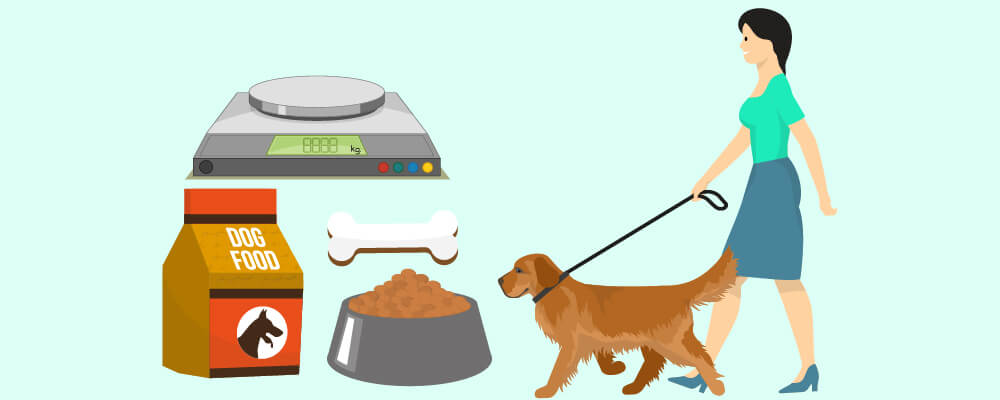
There’s no hard and fast ruling on all dog diets, but there are a few things to consider and remember when you are thinking about your best friend’s lunch. Here are some of those things.
1. All Dogs have Different Preferences
It is vital to remember that every dog is unique, and a diet that may suit another dog may not suit yours. Your dog might have intolerances, health concerns that can be tackled via their diet, they may dislike some foods much like we do, or they may have particular food preferences.
Every dog is different, and therefore you need to tailor your dog’s diet to their individual needs.
Much like two people will never eat the exact same things as one another, two dogs will never eat the exact same things either. It is dependent on the unique situation.
If you have a new dog, you can ask their previous owner, or breeder what their diet is, and if you require help you can ask your veterinarian for advice on what diet to give your dog. Starting a diet is also all about trial and error, so try things out and see how your dog reacts to them.
2. Dogs are Mostly Carnivores
Domesticated dogs are carnivores, but they do eat some omnivorous foods. You could say that they are carnivores with occasional omnivorous tendencies. A dog should largely have a protein based diet of meats, but they may occasionally eat fruits, vegetables, and carbohydrates.
It is important that you ensure that your dogs’ food is complete and balanced for their life stage as well, so even if you only provide your dog with shop bought dog foods, you should ensure that the food you buy your dog is appropriate for their life stage.
You can get foods that are specifically for pups and specifically for older dogs. Much like us, dogs require different amounts of different nutrients in different stages of life.
You can also feed your dog raw meat, fish, vegetables, and rice, to mix up their diet, or you can simply feed them a pure kibble diet.
3. Practice Excellent Food Hygiene
When we say you should practice food hygiene, this does not just mean clean surfaces and food bowls, this also means choosing the right foods and such.
So, if you were to feed your dog a raw meat diet you should choose human-grade meat, as some pet meat and bone products can contain preservatives which are not good for dog health.
You should always be cautious of some meats with your dog just as you are with yourself, as you do not want to risk giving your dog a foodborne bacterial infection such as campylobacter or salmonella.
It is also worth having a veterinary nutritionist formulate the diet for you as well, as many raw diets are not always formulated adequately for the stage of life or any medical conditions.
14 Tips To Improve Your Dog’s Diet
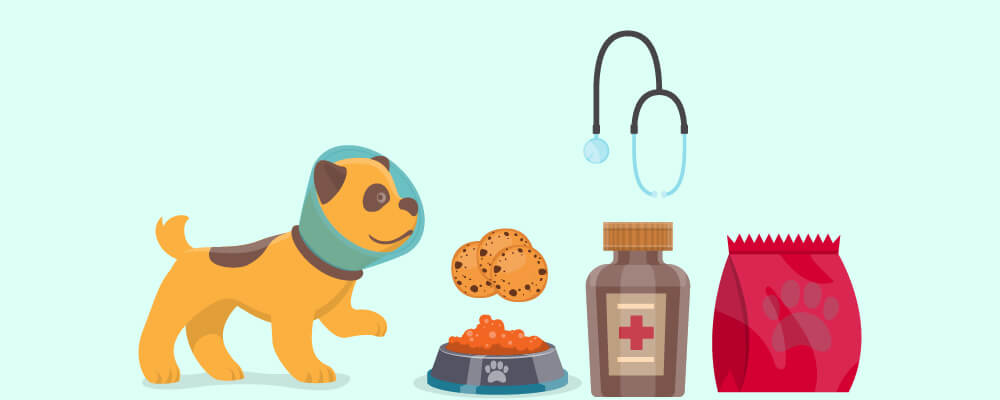
So, considering the things that we have mentioned above, what can you do to improve your dog’s diet? Well, there are plenty of things you can do actually, and there are many things that you can simply add into their current diet to improve it. Remember, you do not need to do every one of these things, but adding in one or two here and there can make all the difference.
1. Examine the Labels of Foods Carefully
No matter how great the adverts are, simply relying on advertisements for nutritional information is not realistic or ideal. People who produce adverts for pet food didn’t make the food and their job is to make even the worst products look appealing. Carefully examine labels on potential dog foods, and this can help you make informed purchases.
Always carefully examine labels on food and treats for your pets. Hell, why not do a Google search of each of the first five ingredients, and then type them in followed by ‘bad for dogs’ and ‘good for dogs’ and you might be surprised at what you find.
Doing research on what is really in your dogs’ food will help you know what they should and shouldn’t be eating and ensures you make the best choices for your pets.
2. Avoid Feeding Shelf-stable Foods as a Staple Diet
Thanks to normalization in our food products, and some very smart marketing, we often do not consider the many rather troubling reasons why processed foods have a 12-24 month shelf life.
Marketing and general consumerism has led us to believe that shelf-stable foods provide everything needed to live a long and healthy life. For the most part, this is not true.
While there will always be the rare exception to this rule, do not count on your dog being one of these exceptions. Shelf-stable food products have no live enzymes in them due to how they are cooked. They are basically dead foods, relying on synthetic supplementation to meet the ‘balanced’ nutritional standards required by the AFFCO.
They might be marketed as a staple diet, but they really shouldn’t be.
3. Introduce Fresh Whole Foods
Adding in fresh wholefoods, such as vegetables and fruits which are full of live enzymes, can add a new dimension into your dogs’ health. These foods are also full of fiber which can aid digestion, encourages bowel movements and improves stool quality.
In fact, if your dog is having some tummy troubles, a small dosage of wholefoods can rectify this situation. (Interestingly, the same effect has been seen in cats too.)
Many of the nutrients that are destroyed by the cooking processes in shelf-stable foods, are then replaced by synthetic nutrients, however, these same nutrients are then found in nature. This is the vast difference between wholefoods and industrially-produced foods for our pets.
Unlike synthesized nutrients, wholefoods contain nutritional cofactors that work synergistically to help the body absorb, assimilate and use these nutrients. We can eat as healthy as we want, but if we cannot absorb the good stuff, it is useless.
4. Feed Foods Rich in Antioxidants and Anti-inflammatory Properties
Inflammation is a major cause of disease in dogs, and so it is important that you do research on all of the ingredients that are found in your dog’s diet, alongside how it has been manufactured.
Inflammation is also one of the leading causes of premature aging- this has been found in both dogs and in people too.
Commercially processed foods are generally inflammatory. Pancreatitis and arthritis are common when you feed processed foods too often, and so if you have to use commercial foods, then you should try to at least offset these ill effects by adding in some naturally anti-inflammatory wholefoods as well.
Wholefoods that are high in antioxidants can help to reduce inflammation, and so try to feed a variety of these good foods to help in reducing risks, and keep your dog young and healthy. Look for foods high in antioxidants and anti-inflammatories
5. Avoid Cooking Meat
Every animal on the planet- except for humans, of course- eats their food raw. When we cook our food to please our palates, we lose out on the beneficial nutrients. This effect stands when we cook food for our pets.
So, while particular wholefoods can release more nutrients once cooked (such as most vegetables), it is best that you avoid cooking any meat for your dog when you can.
Aside from the nutritional values, there are many other reasons why commercial pet foods are flawed. As you see, when the muscles of mammals, fish, or birds are cooked at high temperatures, carcinogenic chemicals called heterocyclic amines are created which can increase the risks of breast, colon, lung, pancreatic, and prostate cancers.
Even cooking a chicken at 350 degrees F for only 15 minutes can produce these cancer-causing compounds!
6. Use Certified Organic Vegetables and Fruit
While you have to look out for general pet food quality, you should also look out for foods when you are feeding fresh food products too. Many non-organic fruits and vegetables on the market are genetically modified, and with no labeling laws in place, it can be impossible to know exactly what we and Fido are actually eating.
Although it is approved for human consumption, evidence does seem to suggest that genetically modified foods are not actually safe.
If you are concerned, then you should investigate the GMO for yourself. The process of genetic engineering can disrupt the DNA of the food in dramatic ways, turning genes off, turning them on permanently, and all this can create a whole manner of unpredicted allergies, toxins, carcinogens, and nutrient issues.
Dog lifespans are typically only around 1/8th of a human, and the health problems seen in dogs exposed to GM foods today will likely be seen in many people in years to come.
7. Wash Non-organic Produce in Apple Cider Vinegar
It is not always easy to gain access to organic produce, and for some people it is not affordable all of the time either, so we need to get creative to make what we can safer.
Plants produce allelochemicals which prevent toxic substances such as pesticides from getting into the surface.
You can scrub off pesticides from non-organic produce with a clean soft brush and soaking it in one part apple cider vinegar and four parts water for a minute, followed by a good rinse.
If you are worried about consuming this yourself, you can do this for all your non-organic produce. It is not an issue for organic produce, but for non-organics, it is best to ensure that it is as clean as can be, and so this is a great safety precaution.
8. Avoid Gluten
If you have ever laughed and joked about how smelly Fido’s farts and poops are, you might be interested in knowing why.
You see, many dry pet foods will contain gluten. This dried residue which is made from corn is often added to pet food to prevent inferior unstable fats from becoming rancid. It does cause waste products to be retained in the body, and this in turn can then cause strain on the liver and kidneys.
Corn gluten, even in the smallest quantities, can be harmful to your dog’s organs. And what is worse of all, is that genetically modified corn is frequently used in pet foods!
So, when Fido has some of that odorous flatulence, think about their food and check the packet. If you see gluten on the list, it might be time to get your pup a different dinner. If their gas and stools stop smelling quite as bad, you have hit the jackpot, and Fido will certainly thank you for it.
9. Replace Rice with Organic Lentils
Dogs are not like us, they do not require grains to be healthy. They don’t eat them in the wild, and a majority of dogs are actually allergic to wheat.
When a dog has an unhappy tummy, it is so weird how so many vets recommend a dish of boiled chicken and rice. Even advertised ‘grain-free’ dog food usually has grains in it.
If you want a substitute, then seek out green lentils, much like rice they require boiling, so the prep time is similar. Do soak before cooking, then rinse, and then rinse again after cooking.
This unique food is actually one of the most nutritionally valuable leguminous plants. With a high-protein content, being rich in iron and magnesium, and lysine as well, which boosts the immune system.
10. Add MCT Oil as a Fat
There are many oils out there, but unlike animal fats and vegetable fats, MCT oil is very unique. It contains medium-chain fatty acids that the body does not store.
MCT oil can fuel the brain, thus supporting healthy cognitive function, reduce the chance of seizures, assist with weight loss, lower blood sugar levels, reduce inflammation, and is both antimicrobial and antibacterial.
When you purchase MCT oil however, do ensure that you choose one that does not contain lauric acid, and note that you will still need to provide your dog with a healthy source of Omega-3 fatty acids, and as fish oils can easily turn rancid, consider other sources such as chia seeds, flaxseeds or even hemp seed. Or, if you wanted to, you could also add small amounts of fresh sardines.
11. Limit Treats and Avoid Overfeeding
While we love a happy dog, food is not the source of happiness, and you should always feed your dog according to whether they need to gain, lose, or sustain their weight.
If your dog is overweight, then you should try to feed them earlier in the day, so they have more time to work off that meal.
In contrast, if they need to gain weight then you should feed them more regularly, and you should feed them before bedtime as well, to stop them from burning off those calories so easily.
Of course, do not worry about your dog being too skinny, especially in their younger and more active years, as in youth it can be normal, to an extent of course. However, as they age they will gain weight much easier, so do not set them up to fail by making them heavier too early on.
12. Consider Teeth and Gum Health
While there are plenty of commercial treats that claim to be beneficial to teeth and gum health, these statements are not always entirely true. Unhealthy ingredients and sub-par cooking practice can cause other health problems.
If you ask any dentist how you can best keep plaque from teeth and maintain healthy gums, they will always recommend brushing. Okay, it is not always practical or do-able to brush your dog’s teeth, so bones are a close second. Gnawing on a raw bone can help to keep your dog’s teeth sparkling white.
You can also add carrots and zucchini to your dog’s diet, allowing them to chew on these, as it is all about the action of rubbing and sloughing on the teeth.
Get creative with this, and maybe cut some holes in vegetables and cover them in raw melted coconut oil and freeze for five minutes. These can satisfy a dog’s urge to chomp and grind, which is especially useful in teething pups too!
13. Rethink Water Consumption
All living things require water. It is the most important aspect of a healthy diet, and often we forget it. In tap water, there are more than 150 different chemicals, of course, this will also vary depending on where you live.
We could argue until the end of time about the safety of healthy, naturally-occuring fluoride. However, the true focus should be on its nasty and toxic cousin, hydrofluorosilicic acid- which is in our water supplies.
97% of Europe refuse to allow it in their water supply, and for good reason, it is a byproduct of fertilizer manufacturing and contains traces of arsenic and lead, increasing the bodies’ intake of aluminum. Most homes should have a water filter to remove unwanted chemicals, but having pure water is just better, and pure water (alkaline) is exactly what your dogs should be getting.
14. Wash Bowls with Vinegar for Hygiene
White vinegar is a chemical-free alternative to cleaning products, it is the best thing to use for stains, for mildew removal, and for killing off bacteria. It will wash your dishes, clean surfaces and floors, and is great to use on dog bowls, it will disinfect them, and it is odorless when dry.
Dogs can be very sensitive to commercial cleaning products, and so you should try to replace as many of these commercial products as possible with natural alternatives.
There are plenty of other alternatives too, but since vinegar has so many uses, and is typically cheaper than a vast majority of cleaning products, it works out better for you and for your dog to stock up on this instead of those big brands of cleaning products.
7 Foods That Should Be Avoided
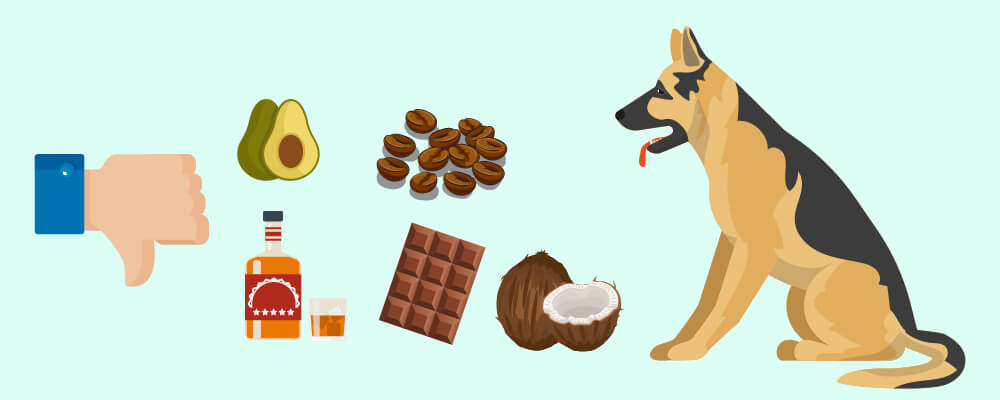
With all these tips in mind, we are certain that you will be the absolute pro at giving your dog the best possible diet now. However, before we leave you to it, we want to talk about the foods you need to make sure stay away from your dog’s mouth.
1. Chocolate
While you might love munching on a tasty bar of chocolate, and while Fido might want to, they shouldn’t have even a bite.
Chocolate is poisonous to dogs, primarily because of its theobromine content, which dogs cannot metabolize properly. If your dog takes a sneaky bite of your chocolate bar, you should monitor them very closely and seek veterinary attention if they show any signs of having a reaction.
If your dog does eat chocolate, and the dog is young, pregnant, or has any health concerns, they should see a vet immediately.
The amount of chocolate that can do harm is a varying factor, however, it does depend on the type of chocolate. Yet, it can take only a small 0.3 ounces of concentrated chocolate per pound of body weight to kill a dog. So, keep that tasty snack away from your beloved pooch.
2. Onions
Another food you should be keeping far away from your furry best friend is onions and garlic.
Onions themselves are very toxic to dogs. These vegetables don’t only make us cry, but they will certainly make your dog cry too. They cause oxidative damage to the red blood cells in dogs, which causes them to rupture and leads to anemia.
It is all due to a toxic principle known as N-propyl disulfide, which attaches itself to the oxygen molecules in your dog’s red blood cells.
Ingestion of onion or garlic of more than 0.5% of a dog’s body weight is potentially toxic. This means if you had a 30lb dog that ate around 2.5 ounces of onion or garlic. If they accidentally lick a bit of onion you dropped, they should be fine, however, always avoid them eating any if you can.
3. Citrus/ Lemon
While you might like a slice of lemon in your glass of water on a hot day, don’t give one to your pup. The citric acid found in citrus fruits such as grapefruit, lemon, lime, and orange, can cause diarrhea, vomiting and even in the very worst-case scenario, depression of the central nervous system.
Not only that, but dogs can taste bitter things, and they don’t like it anyway. They can taste sour, but it is not always a negative view of it.
All citrus fruits also contain essential oils and a chemical compound that is toxic to dogs. These are all found in the plants, tree parts, skin, and the pithy white parts of the fruit.
So, while we might enjoy some citrus fruits, especially on a hot summer day, add the lemon slice to your water and just give Fido some plain water. No lemon for your pooch!
4. Milk
Although you might not think it, dogs cannot have milk and lactose. Some dogs can be lactose intolerant, which can result in stomach upsets such as vomiting or diarrhea. If you find that your dog has a negative reaction to dairy products, then it is best you avoid them.
Just like we can be lactose intolerant, dogs can be, too. You could argue that dogs will suckle from their mother at birth, however, it is important to remember that their mother’s milk and a cows’ dairy milk are far from being the same thing.
This is why we can be lactose intolerant too, our mother’s milk is made for us, but cow’s milk is not. So if you find your dog has any reaction to milk or dairy products, simply stop feeding them these things as they are likely lactose intolerant.
5. Fatty and Salty Foods
Obviously, there is the main reason you want to avoid giving your dog high fat foods. If you are looking to maintain a healthy weight for your dog, then sweet and fatty foods need to be avoided for weight reasons. But fatty foods can also lead to pancreatitis.
Salty foods on the other hand are different. Salt is a requirement in your dog’s diet to help muscle and nerve function.
Yet, some dogs may have chronic diseases such as kidney, heart or liver diseases, and if this is the case then you may need to keep a keen eye on their salt consumption. It is always important that you get advice from your vet regarding their diet. If they do eat something they shouldn’t, call the vet right away.
6. Raw Yeast Dough
Dogs can have small bits of bread, cooked bread of course, but raw dough is a no-go-zone. As yeast rises, it can cause excessive gas in the dog’s digestive system. This is not only painful, but it may also potentially rupture the dog’s stomach or cause gastric dilatation and volvulus.
Yeast requires heat to rise, and so, a lump of unbaked bread will expand inside the dog’s stomach, which causes severe abdominal distention. Then, as yeast cells will eventually ferment, blood ethanol can rise to toxic levels. So, not only can yeast be an uncomfortable problem for dogs, it can also lead to serious, and even fatal poisoning in dogs!
Raw yeast is an issue for humans as well, and while it can be tasty (especially cookie dough, am I right?) It is still risky and can cause stomach upsets. The situation is much more complex and dangerous for dogs, though, and it should simply be avoided.
7. Careful With Some Raw Meats
While raw meats will contain more nutrition and required components for dogs, do be cautious with it. When you eat meat, you know that dark meats are typically safer than white meats, as white meats are more prone to issues such as salmonella.
However, always remember that raw meats contain bacteria, parasites, and other pathogens that would typically be killed during the process of cooking.
Raw meat is not always dangerous to dogs, and it can be healthier than cooking the meat, but always be cautious. The best thing to do if you are insistent on giving your dog raw meats is to give them raw red meats, such as beef, and avoid raw chicken, pork, or turkey.
Also check where the meat came from, and be sure it is high-grade (at least human grade meat) to minimize the risk of any contamination.
Summary
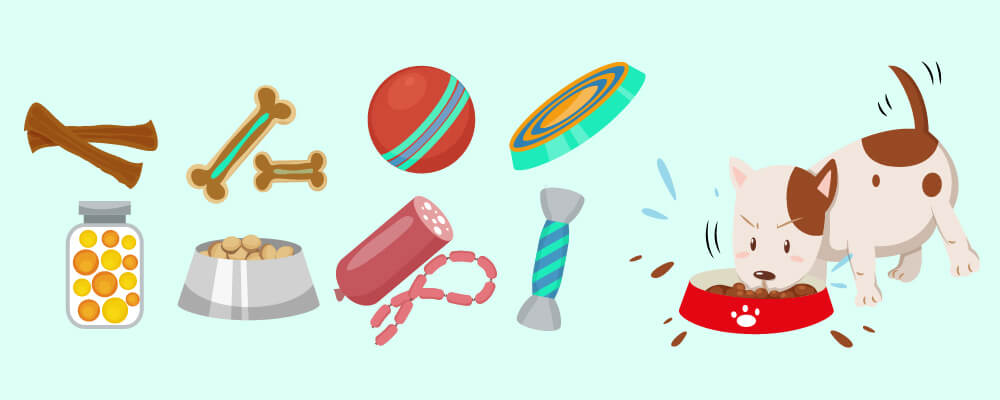
Finding the perfect diet for your dog is not always easy, as every dog is unique, there is no perfect one-for-all diet. Test out different things, but always make sure that you feed a complete diet and pay attention to the nutrients in your dogs’ food. Mind your food hygiene, and ensure that the diet you give your dog is well-balanced, and that they get all they need to be healthy and happy for their stage of life. If you have any concerns or need any advice, do not be afraid to ask your vet for advice.
